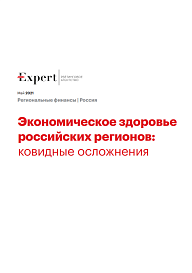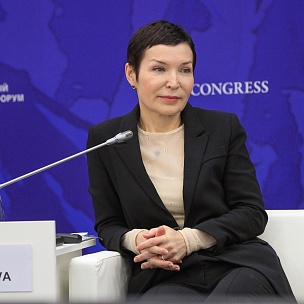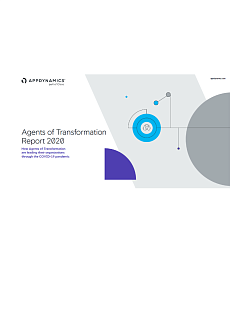The study, prepared by Expert RA, assesses the economic health of Russian regions in the context of the pandemic and related restrictive measures impact, using the Regional Economic Health Index. The reviewers also examined the general economic situation of people and businesses in relation to the pandemic.
The Roscongress Foundation presents the salient points of the publication accompanied by fragments of broadcasts of relevant panel discussions from the business programme of international events held by the Roscongress Foundation.
The pandemic has had a negative impact on regional development, with most regions showing negative trends in key economic indicators.
The pandemic caused a negative trend in almost all but seven of the regions, including the Chukotka and Khanty-Mansi Autonomous Districts, Kamchatka Territory, Leningrad Region, the Republic of Kalmykia and so on. At the same time, Khabarovsk Territory retained zero dynamics. The study notes that differentiation in the level of economic health of the regions has increased slightly the large difference between the indicators of regions with high and low levels of development has remained. Also, despite the negative impact of the pandemic, the top ten performers remained unchanged, with only the Republic of Tatarstan and Leningrad Region added to the list.
The authors note that pandemic restrictions have had the least effect on federal cities, as well as on regions with resource rents and a very high resource base they have remained economically stable and attractive to investors, as in previous years, even despite the negative impact of the crisis. Their budgets are self-sufficient. The lagging regions, in turn, are characterized by low business efficiency, an underdeveloped economy, low levels of well-being, and dependence on the federal budget and federal support measures.
It is important to note that the pandemic caused a sagging of regions own revenues and an unprecedented increase in social spending it was strong federal support that helped regional budgets cope with the crisis and not to build up the debt burden. The authors of the study note that the economic health of consolidated regional budgets has suffered far less than the economic health of the population and regional businesses, and interestingly, some of the regions most dependent on transfers from the federal budget both before and during 2020 were even able to improve their financial performance. According to the survey, state support will continue to have a strong impact on the economic health of the regions, including through the implementation of national projects, as well as the introduction of the treasury payment system and the accumulation of liquidity in the state budget system in a single treasury account, which is an additional source of revenue for the regions.
The pandemic has had an extremely negative impact on the economic health of the population.
The study notes the economic health of the population has deteriorated significantly in 2020. Dynamics of these indicators are also negative, as only five regions have shown growth.
Because of the pandemic, the population and income levels have fallen; unemployment has risen. Thus, cash incomes fell by 3% and unemployment rose to 5.8% (from 4.6% in 2019). And since paid services and retail trade depend on peoples cash income, with the introduction of restrictive measures due to the pandemic and falling incomes, these two sectors have been hit hard. Retail turnover fell by 4.1% and paid services by 11.1%. By far, the worst impact of the pandemic year was the record population decline: the pandemic caused a high mortality rate as well as reduced migration flows (due to coronavirus restrictions). However, the study points out that it is the population that has received the least help from the state compared to the business community and the regions, as not all population segments have been reached in the implementation of support measures.
According to the study, the leading regions in terms of economic health are capital and near-capital regions, which are characterized by a developed resource sector, higher income levels, a diversified economy and increased purchasing power. Among them are Moscow, St. Petersburg, Sakhalin Region, Nenets Autonomous District, and so on. In turn, regions with low purchasing power and low retail trade were the outsiders in these indicators.
Video: https://roscongress.org/sessions/spief-2021-osnovnye-vyzovy-pered-rossiey-/search/#01:22:24.384

Despite the severe blow to business from the pandemic, many companies were able to retain investment and, in some cases, come close to pre-crisis levels.
Thus, the economic health of regional business has shown itself to be more sustainable and stable than the economic health of the population. The analysis showed that 27 regions had a positive trend, compared to 6 with a negative one. Importantly, even though the pandemic crisis has undoubtedly affected investment projects, in many regions they have not been phased out completely, but postponed to later periods. This led to 34 regions showing an increase in investment even during the pandemic.
The study also notes that half of the regions have also seen a positive trend in housing starts. The authors attribute this to timely anti-crisis support measures for the construction industry, including preferential mortgages and loan subsidies for developers. Among factors that help regional businesses to maintain their position as leaders in economic health, the authors cite the high intensity of investment processes, relatively high efficiency of companies and relatively developed small businesses, as well as the high level of housing starts, which indicates the actual presence of effective demand. Lagging businesses, on the other hand, are characterized by low investment intensity and regional business efficiency. Interestingly, housing starts in some of these regions are close to levels of the leading regions.
For more information, see the special sections of the Roscongress Foundation Information and Analytical System: StayHomeEconomy and COVID-19, dedicated to possible ways to stabilize the economy during the pandemic; as well as Regions of Russia, Regional Policy, and Level and Quality of Life, which contain materials about regional development.






